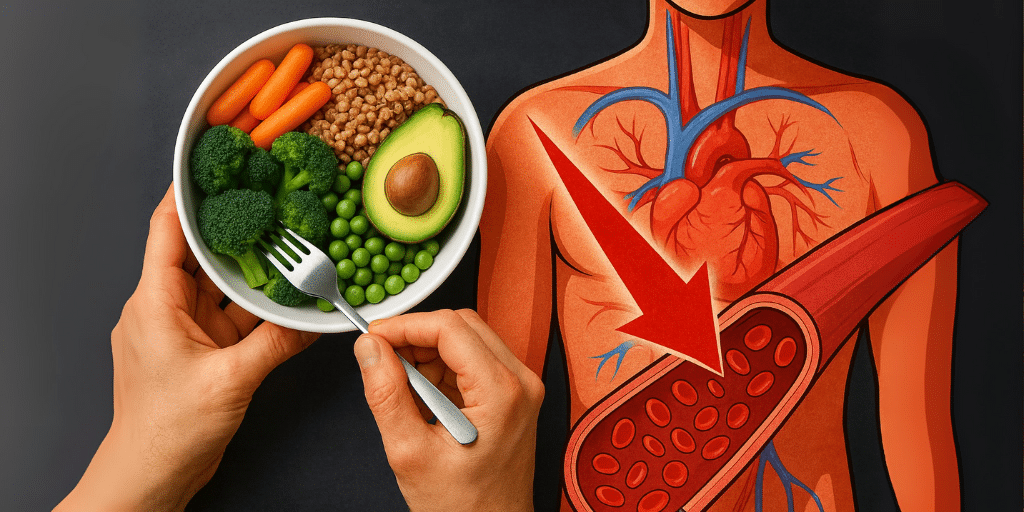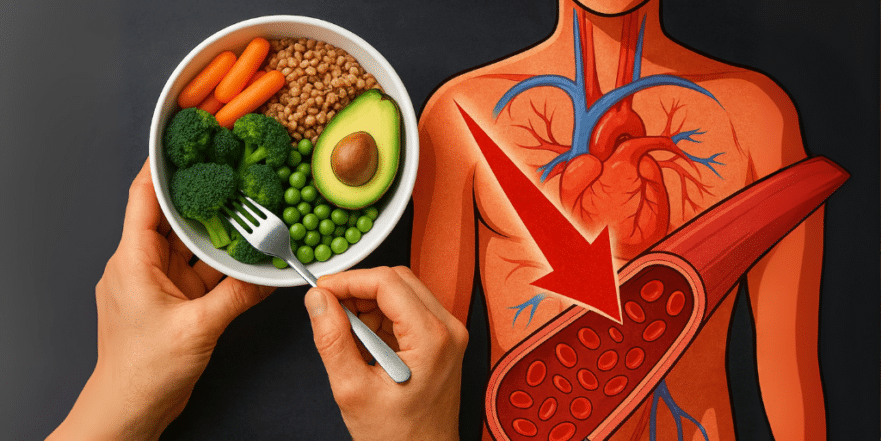
Did you know there’s a simple, everyday thing you can do that might slash your blood sugar levels by over 60%? It sounds almost too good to be true, especially if you’re dealing with diabetes or pre-diabetes. But the science is there, showing this one thing can make a huge difference, potentially even extending your life. And the best part? You might already have it in your kitchen.
This isn’t about a fancy new drug or a complicated diet. It’s about something much more accessible, something that’s often overlooked when we talk about blood sugar control. If you’re ready to take charge of your blood sugar levels, stick around, because this information could genuinely change your life.
The Unsung Hero: Fiber
When we think about supplements for blood sugar, we often hear about things like chromium, bitter melon, cinnamon, or vitamin B1. These can be helpful, and they do have some good research behind them. But they don’t come close to the impact we’re about to discuss. So, what is this powerhouse that’s often relegated to just helping with constipation?
It’s fiber. Yes, good old fiber. Many of us have a bottle of it tucked away, thinking it’s only for one specific purpose. We don’t realize it might be the most effective tool we have for managing blood sugar.
How Fiber Works Its Magic
So, how exactly does fiber help control blood sugar? Think of fiber as a sponge inside your intestines. When you eat something with sugar, like a piece of cake or candy, that sugar normally gets absorbed quickly through the intestinal wall. This causes a rapid spike in your blood sugar.
However, when fiber is present, it forms a gel or a matrix in your gut. This gel traps the sugar, slowing down its absorption. It doesn’t stop it completely, but it makes the sugar take longer to reach those absorption points in your intestine. This means less sugar hits your bloodstream all at once, and the sugar that does get absorbed does so more gradually. This process helps to smooth out the sharp spikes and crashes in blood sugar and insulin levels.
The Data Doesn’t Lie: Real Results
Let’s look at some actual studies to see just how effective fiber can be.
In one trial, 19 participants with high blood sugar levels were given 2 tablespoons of fiber before breakfast and 2 tablespoons before dinner. Their usual diet had about 14 grams of fiber per day. By adding this fiber, they essentially doubled their intake.
What happened?
- After breakfast: Blood sugar levels dropped by 13%.
- After lunch: Blood sugar levels saw a remarkable 65% reduction.
- After dinner: Blood sugar levels decreased by 41%.
It’s important to note that the fiber was only taken before breakfast and dinner. The significant drop in blood sugar after lunch, which occurred about 5 hours later, shows how long-lasting the effects of a single dose of fiber can be. It continues to work, smoothing out glucose absorption throughout the day.
Looking at the glucose curve after taking fiber before dinner, we see that not only did the peak blood sugar level come down, but it also took longer to reach that peak. The overall area under the curve, representing the total amount of glucose absorbed, was also substantially reduced. This demonstrates how fiber helps manage the entire process of sugar absorption.
More Than Just One Study
You might think, “That’s just one study.” But this effect has been seen repeatedly. When researchers combined data from 28 different trials involving 1,400 participants, they found that adding just 11 to 13 grams of fiber per day led to significant improvements:
- Hemoglobin A1c: Reduced by over half a point.
- Blood Glucose: Decreased by 15 milligrams per deciliter.
- Insulin Resistance: Improved by 1.9 points, which is enough to move someone from a pre-diabetic state to a normal range.
This means that adding a modest amount of fiber daily could be enough to bring your blood sugar levels back into a healthy range, even if you’re currently pre-diabetic.
Another large analysis of over 10,000 patients showed even more impressive results. Those who consumed the most fiber (around 34 grams per day compared to 14 grams) experienced:
- Even greater reductions in blood sugar.
- Further improvements in insulin resistance.
- A 45% reduction in the risk of dying from any cause, including cancer, heart disease, and stroke.
Multiple studies have confirmed this longevity benefit, showing reductions in mortality risk ranging from 23% to 59% simply by increasing fiber intake.
Preventing Diabetes and Living Longer
If you don’t have diabetes, the good news is that increasing your fiber intake can help prevent you from developing it in the first place. Studies show that people with the highest fiber intake have a significantly lower risk of developing type 2 diabetes – in some cases, over 40% lower.
Across various studies, increasing fiber intake from the average American level of 16-17 grams per day to 35 grams or more per day is associated with these dramatic reductions in diabetes risk and improvements in overall health.
Where to Get Your Fiber
Don’t want to rely on supplements? That’s perfectly fine. Fiber from food works just as well as fiber from supplements. The key is to increase your overall intake.
Fiber is found in all plant-based foods. Animal products and dairy do not contain fiber.
Here are some excellent sources of fiber:
Vegetables:
- Artichokes
- Spinach
- Cauliflower
- Broccoli
Fruits:
- Asian pears
- Apples (eat the skin!)
- Pears (eat the skin!)
- Consider eating the core of fruits like apples and pears, as it also contains fiber.
Legumes:
- Garbanzo beans (chickpeas)
- Green beans
- Black beans
Your Action Plan
So, what’s the takeaway? Fiber is incredibly powerful for managing blood sugar, improving insulin sensitivity, potentially extending your life, and preventing diseases like diabetes.
Your goal should be to increase your daily fiber intake from the average 16-17 grams to 35 grams or more. You can achieve this through:
- Dietary Changes: Incorporate more fruits, vegetables, and legumes into your meals. Aim to make plant-based foods the foundation of your diet.
- Fiber Supplements: If you find it challenging to get enough fiber from food alone, a fiber supplement can be a convenient way to boost your intake. Taking a couple of tablespoons twice a day can make a significant difference.
By making this simple change, you can take control of your blood sugar levels and improve your overall health for the long term. It’s a straightforward step with profound benefits.
Source: Dr. Dave Clayton

